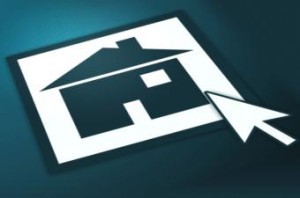 Joe Iafigliola is the VP of Vendor Management for Safeguard. Iafigliola leads vendor recruiting, sourcing, execution, controls, and field quality control teams. He has been in a wide variety of roles in finance, supply chain management, information systems development, and sales and marketing. Iafigliola career includes senior positions with McMaster-Carr Supply Company, Newell/Rubbermaid, and Procter and Gamble. Iafigliola has an MBA from the Weatherhead School of Management at Case Western Reserve University and a bachelor's degree from The Ohio State University's Honors Accounting program.
Joe Iafigliola is the VP of Vendor Management for Safeguard. Iafigliola leads vendor recruiting, sourcing, execution, controls, and field quality control teams. He has been in a wide variety of roles in finance, supply chain management, information systems development, and sales and marketing. Iafigliola career includes senior positions with McMaster-Carr Supply Company, Newell/Rubbermaid, and Procter and Gamble. Iafigliola has an MBA from the Weatherhead School of Management at Case Western Reserve University and a bachelor's degree from The Ohio State University's Honors Accounting program.
DS News sat down with Iafigliola to discuss the importance of mobile technology in the property preservation space of the housing industry.
How does mobile technology benefit those in the property preservation space?
I think it's a couple things. The first is you have a device per person. While you can't necessarily prevent someone lying about who they are, you know that one device is present at a particular place, because of its unique identification. By knowing that, you can get a feel, at least from an analytical standpoint, of who is using the device and where that device is.
Second, we can then tie a person to that device with a background check, with training, etc., so that by allowing them to access the work order, we know who they are and where they are.
Then, while you can certainly provide paperwork orders and have people do checklists and things like that, having the mobile device, and walking people through different areas of a property and different stations, etc., makes sure that the worker who's actually doing the work has the full structure of, either, of the property assessment or the work that needs to be done. You don't have this translation loss, either because they didn't read the work order in full or the person they work for didn't give them the full work order. The main idea is you can structure it so you know they have the full set of instructions.
It's also very hard to fake photos because if you're taking them on a mobile device, you can geo-tag them and time tag them. Then by placing the photo in a captive application, there isn't a way to manipulate and mess with the photo metadata while it's in the application.
Coming very soon is the ability to know where the property is as well as know where the device is, and if there's a mismatch, an alert is sent. It's less than 1/10th of one percent that this happens, but every single time you go to a wrong property, it's obviously a significant event. Every layer of control that you can provide to make sure you're at the right place is critical, so front of house photos, address validation, and now with the ability to compare to where you think it is from a GPS standpoint, one more layer of control is added.
I imagine using mobile cuts time out of the process. Is that the main intent?
Our main intent is to increase the quality of the work and the controls, but it does have a side benefit of productivity. You don't have a person with a yellow pad that then has to translate to a person that's sitting in front of a computer somewhere trying to make sense of the photos and the notes. I think it does, ultimately, save time because you only have to do it once. I always think of that as more of a side benefit as opposed to the main objective.
Which is to improve the quality, correct?
Yes. I'm sure you've heard this from others, but if I'm at the property doing the work, I have the best set of information. If I then tell someone to put that in the computer system, who then tells someone at a field service company, then tells a client, who then tells an investor, obviously, the classic game of telephone. You lose information. The fewer layers we can have, the better we are. Having a person who's doing the work with a mobile device answering everything and then plumbing that information all the way through to client investor, gets rid of the information loss. That's part of our whole system of improving controls.